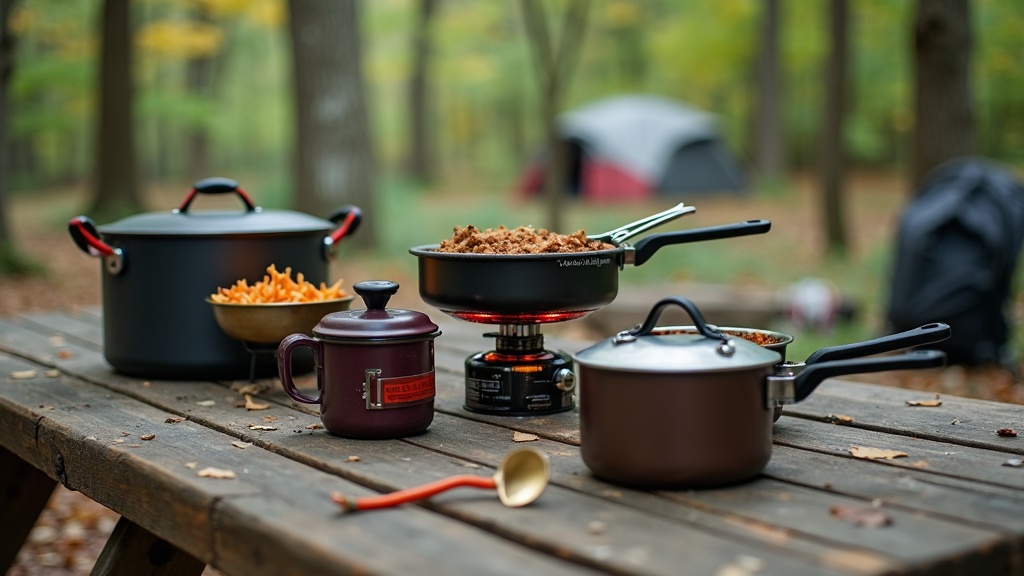Impact-Site-Verification: 37aa6cb3-46e0-49bf-af88-75baafe93647
Whether I’m heading out on a spontaneous camping trip, planning a picnic, or just need a backup for emergencies, having a trustworthy stove is really important. There’s something magical about cooking on an open fire, but it isn’t always preferred or possible. When fire bans are in place or the weather isn’t ideal, a portable stove steps in to get the job done quickly and easily.

Why Portable Stoves are a Good Idea
Far from the old school heavy, awkward camp kitchen gear of the past, we now have options that range from small gas canister stoves to lightweight alcohol burners and even woodburning stoves with advanced designs for better fuel efficiency. I find these stoves super helpful not just for obvious outdoor trips, but also for backup cooking when the power goes out at home. In fact, according to the Outdoor Industry Association, more people are bringing portable stoves along on adventures than ever before, making hot meals accessible just about anywhere. When my uncle and I went hitchhiking it was fun to see the looks on people’s faces as they drove by and we were just sitting on the side of the road enjoying a cup of coffee.
The idea is simple: a portable stove lets me make coffee, cook dinner, or boil water wherever I set it up. While some people bring portable stoves for hiking and camping, others keep one in in the car or at home for backup. The wide range of fuel options, sizes, and designs means I can pick something that matches my needs and my style of traveling or adventuring. Plus, these stoves have inspired new traditions like impromptu road trip cookouts and urban picnics anywhere there’s safe, outdoor space.
Types of Portable Stoves and How They Work
Choosing the right stove starts with figuring out what kind of fuel and features I want. Each type has benefits, trade-offs, and basic safety considerations.
- Canister Stoves: These use prefilled gas canisters (usually isobutane or propane) and are really easy to light and control. I just twist on the stove, open the valve, and use a lighter or piezo igniter. They’re quick for boiling water but can lose pressure in very cold weather.
- Liquid Fuel Stoves: Running on white gas, kerosene, or other fuels, these are dependable in extreme conditions. They need regular cleaning and a bit of practice to light, but they work even in freezing temperatures and at high altitudes.
- Alcohol Stoves: Lightweight and nearly silent, these are popular for backpackers going ultralight. I’ll need to bring a bottle of alcohol fuel, and it’s important to measure carefully since there’s no way to turn them off besides letting the fuel burn out.
- Solid Fuel Stoves: Using small tablets (like Esbit), these stoves are simple and light, but burn time can be unpredictable. Good for emergencies or minimalist trips.
- Woodburning Stoves: These use small twigs or pellets as fuel. I like that I don’t need to carry extra fuel, but finding dry wood can be tricky if it’s raining.
Most stoves today have built-in wind shields, foldable arms, and simmer controls. Some have autoignition. For quick overnight hikes, I like tiny canister or alcohol stoves. For family car camping, a two-burner propane stove keeps things comfortable and familiar. The favorite for my uncle and I was a one burner gasoline stove that was super cheap to fill up and would last almost a week, cooking 2 meals a day & 2 cups of coffee each a day.
How to Get Started Using a Portable Stove
Getting set up with a portable stove is simple if you follow a few practical steps. I always recommend trying out the stove at home before taking it on the road. This way, you get comfortable with how to assemble it, attach fuel, light it safely, and adjust the flame.
- Pick the Right Stove: Think about how many people I’m cooking for and what kind of meals I want to make. A single burner is fine for solo trips, but more people means a bigger stove or an extra burner.
- Read the Instructions: Every stove works a bit differently. Reading the manual makes sure you use the correct steps for assembly and lighting.
- Measure Fuel: Bringing the right amount of fuel matters. Estimate based on meal plans, and carry a little extra for surprises or cold weather. Using marked fuel bottles and canisters, or keeping a simple fuel log, prevents running out unexpectedly.
Things I Think About Before Buying a Portable Stove
Not all portable stoves work the same in real-world situations. A few honest considerations and tips help me buy wisely and use the stove safely.
- Weight and Size: Hikers look for the lightest stoves, while families driving to a campground can pick larger and sturdier designs. Some new compact stoves fold up so small they fit in a jacket pocket, but for group meals I prefer something with broader support and a stable base.
- Fuel Availability: Some fuels are easy to find everywhere like gasoline, while others need special ordering or local knowledge. Canister stoves can be convenient in the United States and Europe.
- Wind Performance: Wind can blow out small stoves or make cooking slow, so I check for windshields or built-in wind protection. Some ultralight stoves come with snap-on wind screens or bases to bolster wind resistance.
- Simmer Control: For anything beyond boiling water, being able to control the flame is super helpful for cooking without burning my meal. Adjustable controls let me cook things like pancakes or eggs, not just rehydrated meals.
- Setup and Cleaning: Complicated stoves are more likely to get left in the closet. I value easy assembly and quick cleaning above fancy features. Cleaning is especially important with liquid stoves; a simple wipe down keeps your gear working and food tasting right.
Fuel Safety
Every fuel has its hazards. For example, gas canisters need to stay upright and away from flames when attaching the stove. Liquid fuel is flammable even if I spill a little. Alcohol and solid fuel can be dangerous if stored carelessly around food. Keep fuels stored securely and far from kids or pets. The best approach is always paying attention. It’s also smart to wait until the stove has cooled down before packing it up, preventing accidental burns or melted gear.
Keeping Meals Interesting
It’s easy to fall back on quick ramen noodles. With a bit of planning, I can enjoy real meals: scrambled eggs with bacon, soups & stir-fries. Bringing lightweight ingredients, measuring beforehand, and packing spices in small containers helps me stay creative even with a tiny stove. Looking at online camping meal ideas (like the Backpacker meal planning guides) fuels inspiration. Sometimes, adding a few fresh veggies or instant rice packets to the mix creates much more satisfying campground meals without extra weight.
Practical Tips for Mastering Portable Stove Cooking
Bring the Right Cookware: Make sure you bring the right pots, pans and utensils for your meal plans.
Pack a Backup: If I’m going far from help, packing matches, an extra lighter, or even a tiny backup stove gives me peace of mind. Reliable boiling means clean water and safe food. It’s good to stash waterproof matches or a spark striker in your kit, just in case my lighter fails.
Leave No Trace: I always pack out any trash I may create in the process. Responsible stove use keeps campsites available for everyone. I make it a habit to bring small trash bags for scraps and wrappers, doing my part to leave the outdoors cleaner than I found it.
If I’m forced to cook in challenging conditions like rain, I use a tarp to create a simple overhead shelter, making sure there’s plenty of ventilation.
My Favorite RealWorld Uses for Portable Stoves
Having a portable stove has saved my trips many times, like making coffee during a chilly sunrise or whipping up a meal in the middle of a surprise rainstorm. I’ve used them at the beach, in city parks, on the side of the road and on remote trails. For big family camping weekends, the familiar click and whoosh of a propane stove means breakfast is only minutes away.
- Camping: Waking up in a tent, then brewing coffee in a few short minutes never gets old. Simple stoves make hot breakfasts possible far from electrical outlets. Just heating water for oatmeal on a quiet morning can really get your day going in a satisfying way.
- Hiking and Backpacking: Being able to boil water for those side dish rice or noodle meals you can find at just about any store can be perfect after a long day on the trail. Sometimes, a hot meal at the summit or along a riverbank is the ultimate reward.
- Emergency Preparation: Power out at home, it’s always super handy to have a backup stove to cook food and heat water during outages. It gives real peace of mind when you know you can cook safely indoors, just remember to properly ventilate. Keeping your family comfortable during winter outages is priceless, and a calm meal thanks to a simple stove turns a tough day into something creatively fun.
